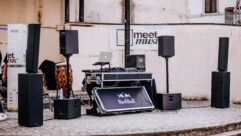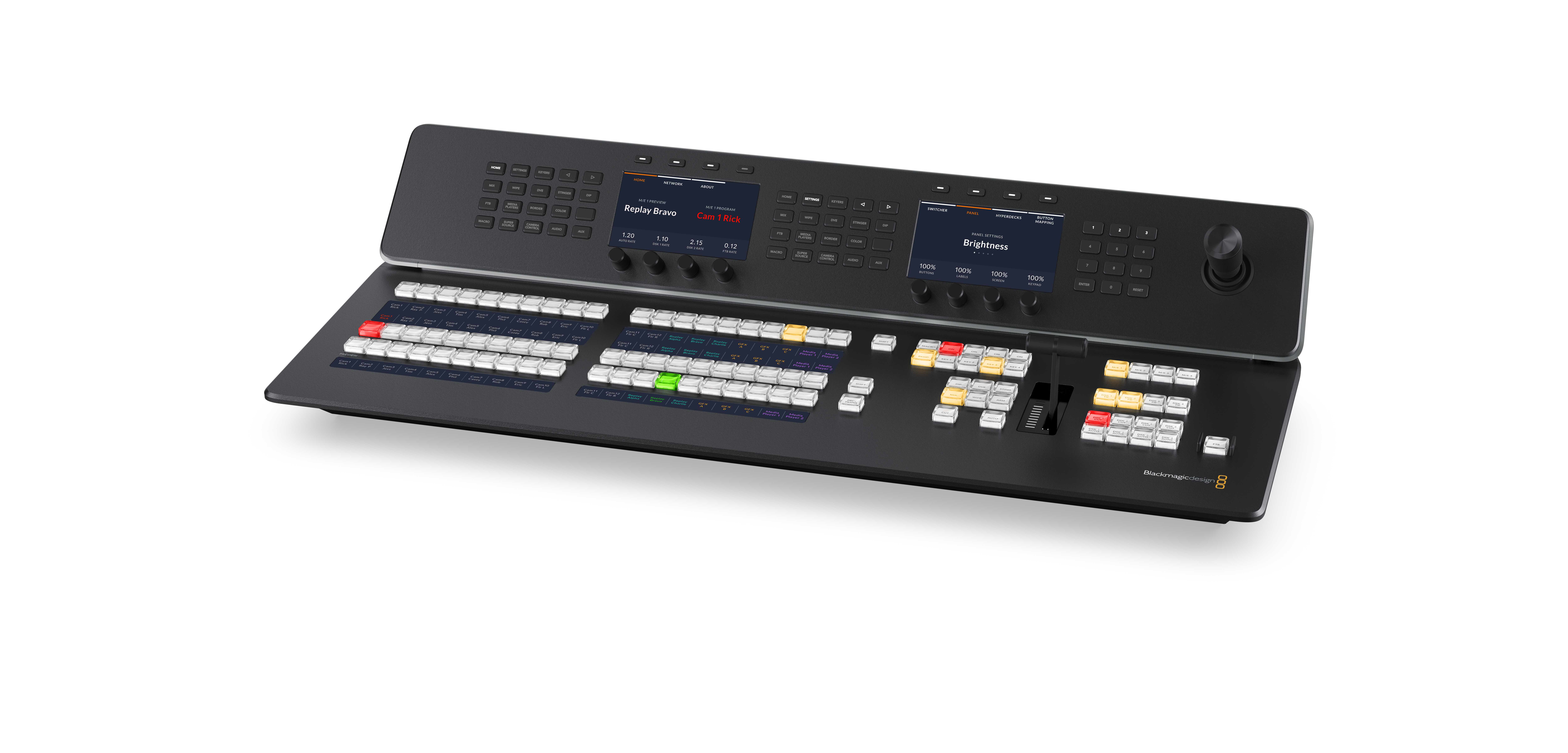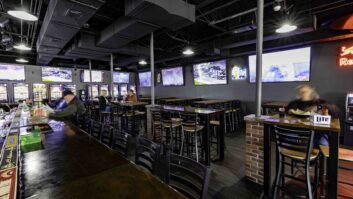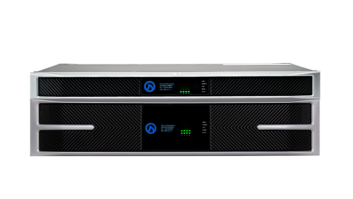In this edition of the SVC Podcast, SVC Contributing Editor Bennett Liles talks with Pete Dugas of the Athens, Georgia firm of TSAV, Technical Services Audio-Visual regarding their complete power and sound system upgrade for Sanford Stadium, home of the University of Georgia Bulldogs. In Part 1, Pete details the Furman power conditioning gear installed and discusses the planning and tough timeline under which TSAV had to work to get everything done for the beginning of football season.
Links of interest:
• TSAV Technical Services Audio Visual in Athens, Georgia
• Furman Classic Series Power Conditioners
• Sanford Stadium, home of the Georgia Bulldogs
• Furman Series II Power Conditioners
Download Podcast Here:
https://s3.amazonaws.com/nb-svc/public/public/121-1-Furman-at-Sanford-St…
Editor’s note: For your convenience, this transcription of the podcast includes timestamps. If you are listening to the podcast and reading its accompanying transcription, you can use the timestamps to jump to any part of the audio podcast by simply dragging the slider on the podcast to the time indicated in the transcription.
FromSound & Video Contractor Magazine, this is the SVC Podcast with Pete Dugas of TSAV. Show notes for the podcast are available on the web site ofSound & Video Contractor Magazineatsvconline.com.
In Sanford Stadium, home of the Georgia Bulldogs the crowd gets loud and the AV had better run smoothly. TSAV in Athens was called in for a power and sound system upgrade. Pete Dugas is here to tell us about how they got it all done just in time for the football madness to begin. That’s coming right up on the SVC Podcast.
Pete, welcome to the SVC Podcast.
Glad to be here.
From Athens, Georgia; the location of Sanford Stadium, the home stadium of the Georgia Bulldogs. You guys did a power system upgrade for them, a pretty substantial project, but before we get into the details of that, tell me about what’s been going on at TSAV. What kind of stuff do you get into there?
We’ve been growing quite a bit. The last couple of years we’ve seen nearly doubling our size, a lot of projects in the Middle East, a few projects in Europe and a lot of projects all over the United States. We keep getting called to do repeated projects with different clients and it seems to be growing fast. So a lot of athletic facilities, a lot of judicial complexes, a lot of work in education, science and technology, some transportation centers, and a lot of growth in medical education as well. [Timestamp: 1:32]
So things haven’t been dull at least. Now describe Sanford Stadium for us. I’ve worked TV sound on a few ballgames there. It’s a huge place and it really gets loud.
It sure does.
The famous hedges that run up and down both sides of the field don’t really absorb any of that sound so it can really get deafening during a big game like the Georgia-Florida game.
That’s correct. We were measuring 114 dB at the mix position this last Saturday against Auburn. [Timestamp: 2:00]
So what has TSAV done in there before? This job wasn’t your first time in Sanford Stadium.
No. We’ve been doing work with the University of Georgia Athletic Association for over a decade. We worked on their video systems and their Butts-Mehre facility for awhile a few years ago, a pretty major upgrade to how their video systems work. We worked on some of the broadcast systems in the stadium. We worked on some of the back-of-house technologies that are used and sound systems and all sorts of different things in there. [Timestamp: 2:30]
Well, doing anything in there can be a real challenge because the place is so big I guess one big job is just getting around in there.
Golf carts are absolutely key in any stadium project, yes. It’s a big facility; 92,000 – that may have been increased to 98,000 capacity. I know 92 in the primary seating areas, so it’s the fourth largest stadium in the U.S. It’s a good-sized facility to say the least. [Timestamp: 2:56]
And what’s been going on in there lately as far as the recent technical upgrades? What have they been doing in there to sort of beef up the AV system?
We completely renovated the sound system that was in there. We had been doing some maintenance on the existing system there for awhile and it was simply time to update it to newer technology and provide for a little bit different experience there. So the entire point-source sound system in the scoreboard area was replaced. The perimeter system was revamped and the majority of it replaced, the entire mix position, 192,000 watts worth of power added to the system and power amplifiers added to it, upgrades to the broadcast infrastructure and upgrades to the sky boxes and the suites. [Timestamp: 3:43]
Where have they got all of that now? Is it all in one place, say the house sound mixing and all of that?
It’s distributed between the mix position, a primary press area, a centralized rack area, some racks inside of the scoreboard and in subordinated systems in broadcast and in the suites. [Timestamp: 4:03]
And of course power is basic to all of that. They brought TSAV in to make the power upgrade and insure that all the new gear is going to run right.
In conjunction with the renovation to the primary sound system and the systems in the suites, we knew we had to take a real close look at the power and figure out where it was, where it needed to be and weigh that into the entire design approach. We knew that if we were going to go in one direction with the sound system it would mean a certain approach to power and if we were going in another direction it would mean a different approach. So analysis of the power infrastructure and how to get from Point A to Point B was essential to the basic building blocks of the design process. [Timestamp: 4:45]
I know that even some of the pro football stadiums are sort of infamous for having power trouble. Have they ever had any kind of big blackout during a game at Sanford Stadium?
Not during a game. We did have the scoreboard get struck by lightning twice while we were in the midst of upgrading the systems. It was unusual from what we’ve heard. They don’t get that many lightning strikes in the facility, but we had a couple in the space of a few days, so kind of alarming. The power within the facility is pretty well maintained, pretty clean. We did have to get a little bit more power in just a few places here and there and we had to supplement grounds in certain areas, and then of course we needed to get the proper sequencing and conditioning equipment in place. [Timestamp: 5:28]
And how long did you have to do all of this? What was the timeline that you were working on?
We had notice to proceed on the integration side of it on the 20th of May and completed the installation on the 17th of August. It was a very, very fast process. We had a couple of months in advance of the notice to proceed on the integration to fully assess the design, starting with modeling of the sound systems and acoustic modeling back in early spring, and then modeling of the different sound systems and modeling of all the power systems just in time for us to get to the board meeting and get it approved. [Timestamp: 6:07]
I would think that it got done just in time because in August things really get cranked up in there.
Oh, yeah. Putting a sound system in for a 92,000-seat venue between essentially the first of June and the first of August is – we had basically two-and-a-half months to procure the equipment, to get the system built, to get it optimized and commissioned and train the staff and have it completely operable. [Timestamp: 6:34]
Of course the stadium still had the old sound system in place so I guess part of the job was getting all of the old stuff out first.
Yeah, the first 10 days or so of the project was a heavy demolition process.
And then what did you do first? Did you work on the power first or get the sound system in and then go to work on the power upgrade?
The power went in before any of the active system components went in.We did the demolition first. Well let me say we started out by trying to get the cranes in the right place and figure out how to get all the different resources where they needed to be, which the logistics of that were difficult. A lot of sequencing involved, the care and maintenance of the field, all the other different projects that inevitably go into managing a facility like that in the months preceding the start of an athletic season. There’s lots of people working, so lots of logistics, then demolition, then the mechanical systems and the electrical systems had to be upgraded. The heat management systems in the scoreboard and in the rack rooms, along with the power, all that had to be done first and thankfully we got all that in place and had our lightning strikes well before we had to plug any active components in. [Timestamp: 7:46]
Oh, well I was going to say, that would really give your gear a test. Maybe a little more testing than you wanted.
Yeah, a little bit more. Pretty good use case test, though, pretty good.
Really! What a great advertisement if it kept right on working after that.
It did.
We’re going to be talking more about the sound system in part two, but the power upgrade equipment was made by Furman.
That’s correct.[Timestamp: 8:05]
So what are the capabilities of the power upgrade? What does the new power gear actually do?
The first thing that it does is condition the power. We make sure that the voltage that we’re getting is clean and it’s consistent. If there are different variances on the power sources, of the levels of power being distributed, it regulates those so that they can be consistent, especially for all the digital equipment. It’s really sensitive to fluctuations and power loads. So it keeps it consistent is the first thing it goes. The second thing it does is it protects it in cases of surge or problems with lightning and things like that. The third thing that it does is allows us to control and monitor the power. We’re able to monitor the power, to do diagnostics on the fly. We’re also able to manage the start up and shut down of different pieces of equipment remotely so we can sequence the initialization of a system or a test sequence appropriately. [Timestamp: 9:02]
Well, that would make me rest a lot easier during a game to be able to eyeball the power situation, especially in the event of a problem.
Yeah, the power and heat. You’ve got to be able to see that stuff along with a lot of other things. But it’s really important to see what power is doing and what the temperatures are doing too. [Timestamp: 9:19]
All right. Well, TSAV got in there and got it all done under the time constraints and the beginning of football season in Athens is a hard deadline. Thanks, Pete for taking us through this. Pete Dugas from TSAV, Technical Services Audio-Visual, in Athens, Georgia and Sanford Stadium, home of the Georgia Bulldogs. See you in part two.
Thanks.
Thank you for being here with us for the SVC Podcast with Pete Dugas. Show notes are available on the website ofSound & Video Contractor Magazineatsvconline.com. In part two Pete will get into the Danley Jericho sound system that TSAV installed in Sanford Stadium. Next time on the SVC Podcast.










